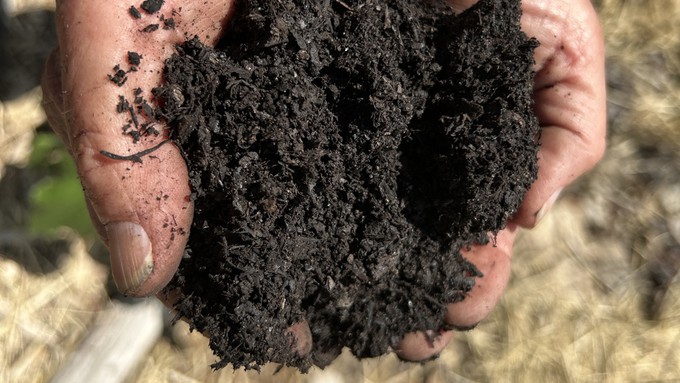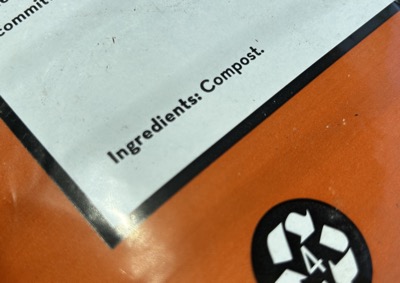
Free compost available to residents in pilot recycling program

Here's why it's called "black gold" -- it doesn't get much richer than this compost from Sacramento County's Waste Management and Recycling program. (H/t Laura Cerles-Rogers) Kathy Morrison
Since July 1. Sacramento County residents have been throwing all kinds of things into their organic waste (formerly green waste) bins: Chicken bones, greasy pizza boxes, used wine corks, snubbed cat food, moldy cheese, salmon skin and many other organic items, not just leaves and grass clippings.
A bizarre combination, to be sure, but the County Waste Management and Recycling program assured us that it would all be acceptable and put to good use.
Over the subsequent months we may have forgotten what the end result might be. But the county's been working hard and, nearly 11 months later, "it's soup." Specifically, all those bits and bones have been cooked into the black gold known as compost.
And it's free for the taking. Monday through Friday, between 10 a.m. to 2 p.m., the county will make compost deliveries to its property at 3843 Branch Center Road (near Bradshaw and Kiefer roads), based on demand.
There are some details. First, you have to shovel the compost yourself, with your own tools, into your own containers. No mechanical loading is allowed. It's available on a first-come, first-served basis, but can be loaded up anytime, 24/7.
The county says it plans to have compost available on demand from spring until early fall. The compost pile will be restocked as necessary.
This process started in California with Senate Bill 1383, which requires that organic materials be kept out of landfills. Each county or city had to come up with its own organic waste recycling program. We previewed the Sacramento program's start in this post last summer. Many people now have the little buckets under their sinks and empty them into the organic waste bins each week.

So what to do with this free compost? (Or any compost, for that matter.) Well, it's a spectacular soil amendment, and also an excellent mulch. What compost is not is plant fertilizer -- though plants certainly benefit from it. Because compost can be made of so many different things, and can be different in each batch, it has no guaranteed list of plant nutrients. That goes for commercial compost as well as the county's -- see photo at right of a bag of commercial organic compost.
So if your roses need a dose of nitrogen or melons require some phosphorus, don't rely on just compost. But the soil they grow in will love it.
Find out more on Sacramento County's compost program here: https://wmr.saccounty.gov/Pages/Self-Serve-Compost.aspx
---
Some of our previous posts on compost and composting:
Comments
0 comments have been posted.Sacramento Digs Gardening to your inbox.
Sites We Like
Garden Checklist for week of July 21
Your garden needs you!
* Keep your vegetable garden watered, mulched and weeded. Water before 8 a.m. to reduce the chance of fungal infection and to conserve moisture.
* Feed vegetable plants bone meal, rock phosphate or other fertilizers high in phosphate to stimulate more blooms and fruiting. (But wait until daily high temperatures drop out of the 100s.)
* Don’t let tomatoes wilt or dry out completely. Give tomatoes a deep watering two to three times a week.
* Harvest vegetables promptly to encourage plants to produce more. Squash especially tends to grow rapidly in hot weather. Keep an eye on zucchini.
* Pinch back chrysanthemums for bushy plants and more flowers in September.
* Remove spent flowers from roses, daylilies and other bloomers as they finish flowering.
* Pinch off blooms from basil so the plant will grow more leaves.
* Cut back lavender after flowering to promote a second bloom.
* It's not too late to add a splash of color. Plant petunias, snapdragons, zinnias and marigolds.
* From seed, plant corn, pumpkins, radishes, winter squash and sunflowers.